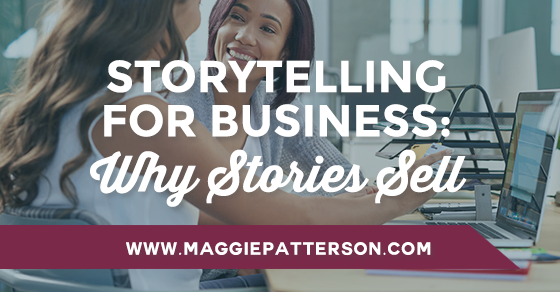
When you’re starting a business, nothing can fully prepare you for the sheer amount of learning you need to take on.
Sure, you’re good at what you do, but there are so many other functional areas from finance to hiring to legal that you need to learn the ins and outs of. Acquiring the knowledge and skills you need to actually run a business can quickly be a full-time job.
This is especially true when it comes to marketing. The sheer number of possible strategies and tactics is mindboggling. Then add on a layer of marketing speak and it’s too damn much. To the point where it’s hard for someone who actually works in marketing to stay on top of all of it.
It’s no wonder that all the copy and content-related terms get so muddled up. One of the biggest points of confusion I encounter is the difference between messaging and storytelling.
What is Messaging?
Think of messaging as the “facts” of your brand. Your messaging includes your values, personality and vision. It should also include your benefits and differentiators.
Typically, your message is one-way communication that’s focused on the organization. While your message is critical to shaping your brand, it’s only part of the picture.
The problem with only having a message is that it’s focused on you and your brand and it fails to answer the #1 thing prospective clients want to know from you: “What’s in it for me?”
Facts don’t cut it when it comes to standing out online. Even if you have the most compelling and interesting messaging on the planet. (Hate to break it to you special snowflake, I can assure you that even your most creative and original idea has probably been “done” in some form.)
The popular mantra, “facts tell, stories sell” is well-known in sales circles and extends to all of our marketing efforts.
Why Stories Sell
Stories help us create an emotional connection with our audience, but they also create context for our message.
Storytelling helps to consider our message through the eyes of our customer and provides the deeper meaning to why we do what we do, how we do it and the results or benefits we provide.
Messages are often carefully controlled, while a story makes you and your brand much more honest and human.
The role of stories is to bring the message to life and make the message appealing and relatable for our audience.
To understand stories, we automatically associate what we’re hearing with our own experiences. Neuroscientists have identified what’s called neural coupling where the storyteller and the listener have similar brain activity patterns. In the study, when communication was broken, the coupling vanishes.
That coupling is what makes people willing to read, watch or listen, and ultimately that’s what drives them to actually do business with you, as they feel they can trust you.
In short, a story persuades people in way that facts simply can’t. Which is why you need more stories in your business if you’re going to be able to market and grow your business.
If you’re not sure where to start, here are a few types of stories that sell:
- The Before/After: Share your before and after, or even better, your customer’s before and after to showcase results of working together.
- Universal Experiences: Tell stories about shared experiences. If it’s way too outside your audience’s experience they won’t pay attention in the same way.
- Happily Ever After: We’re all conditioned to love a happy ending. Keep your stories positive and productive with a memorable happy ending.
Start using stories to support your messaging in all of your marketing. From webinars to interviews to blog posts, stories help you sell your message and your products and services.
If you want help getting started and need a pro on the case, I can help you with the Story Distillery. This is my signature 1:1 services and limited spots are available. Click here to get the details.


